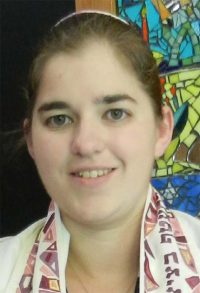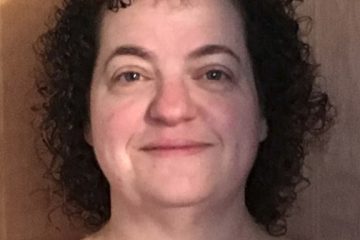Finding balance

By Rabbi Tina Sobo, Temple Israel
Amid the energy of the High Holy Days, I have found myself considering and practicing the concept of balance over the past few weeks in many ways.
Meanwhile, in our weekly Talmud class at Temple Israel, we continue to muse every time the text reads, “A dilemma was raised” or, “that idea was rejected.”
Of course there’s a dilemma or a challenge: it’s Talmud and if the rabbis of the Talmud have not considered every possible aspect of an issue, they are not going to be done talking about it.
This brings to mind two texts from the Talmud, which when taken together, are among my favorites. I include them in slightly paraphrased, non-literal translation form:
Text 1: From the Babylonian Talmud, Tractate Berachot (Blessings), Page 30a:
Rabbi Hisda believed that one had to stand still to recite the prayer for traveling. Rabbi Sheshet (who happened to be blind) believed that you could either stand still or recite it while moving. One day the two rabbis were traveling together on a journey. Rabbi Hisda, according to his beliefs, stopped his horse, and got down to pray the blessing for travelling.
Rabbi Sheshet heard that the footsteps of his friend’s horse had stopped, and asked his guide what Rabbi Hisda was doing. He was told that his friend had stopped to pray. Rabbi Sheshet said, “Place me beside him that I may also pray.” And he added, “If you can be good, do not be called bad.”
Text 2: From the Babylonian Talmud, Tractate Berachot, Page 11a:
Background: There is a debate among the students of Rabbi Hillel and Rabbi Shammai. Hillel says one can say the Shema (and V’ahavta) in any position. Shammai says one must say it reclining, because it is written, “When you lie down.” (In the book of Deuteronomy and as part of the V’ahavta). Whereas Hillel maintains that this verse refers to the time when one generally lies down, i.e. evening, and does not refer to position, since we also say, “When you sit in your house and when you walk on your way (from the same set of verses/prayer).”
One time, Rabbi Ishmael and Rabbi Eleazar were eating dinner together when it came time to say the evening Shema. Rabbi Eleazar was standing. He followed House of Shammai and therefore laid down to say the Shema.
Rabbi Ishmael, who followed the House of Hillel, was already laying down. He could have remained in that position, but stood up to say the Shema.
Rabbi Eleazar was upset and asked him why he switched positions. Rabbi Ishmael responded that his friend was following Shammai and he follows Hillel. Rabbi Eleazar, then said, “But you were already reclining! Hillel permits you to say the Shema in the position in which you find yourself!”
Rabbi Ishmael responded, “This is true, but if our students saw us both reclining to say the Shema, then the law might be fixed in one way forever (lest they think the law is only followed according to Shammai).”
Now while in good Talmud fashion, you can argue the differences in each story that lead each rabbinic figure to his decision, here is what I find most interesting: The Talmud gives two cases that are both set up as Rabbi 1 and Rabbi 2 disagree on this piece of halachah (Jewish law), one does it his way, the other could go along and still be within his beliefs, or make a point of the fact that their practice varies. In one case, the rabbi chooses to join his colleague; in the other, the rabbi chooses to make his position known.
The truth is, we need both of these anecdotes as models. We live in a diverse community, Jewish and secular. There are times, like at our wonderful community Selichot service, when it is best to find where our beliefs and practices overlap and join together. There are times when it is more appropriate to emphasize the differences in practice that make each of us a Jew, a person, in our own way.
The key is knowing which model to follow in a given situation.
To read the complete October 2017 Dayton Jewish Observer, click here.





